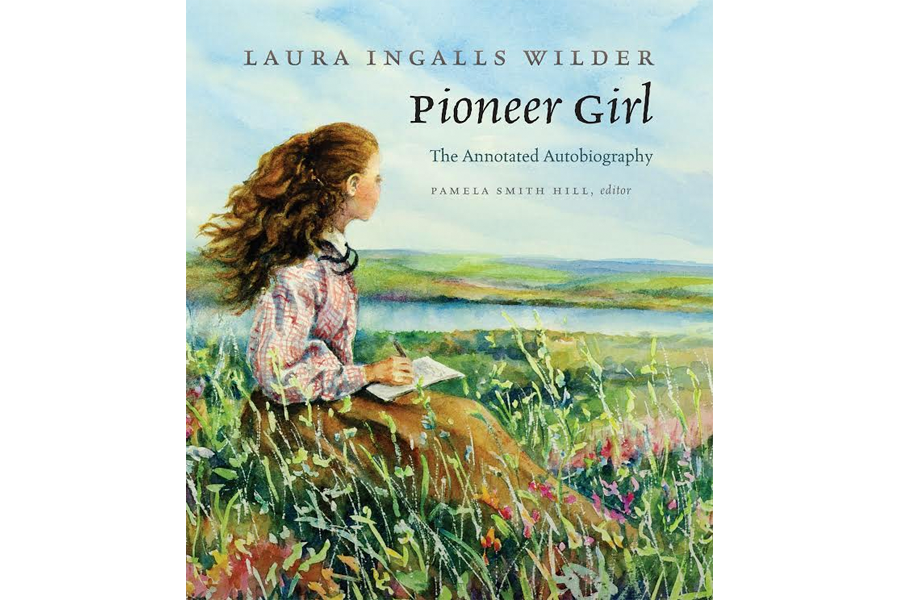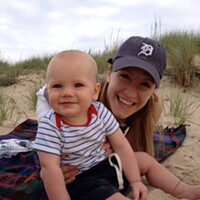'Pioneer Girl' tells the true story behind the 'Little House on the Prairie' books
Loading...
Laura Ingalls Wilder’s annotated autobiography Pioneer Girl is as much a book for writers as it is for readers.
Edited by Pamela Smith Hill, the book offers an in-depth look at the original hand-written nonfiction manuscript by Wilder – best known as the author of the “Little House on the Prairie” series – that would eventually inspire the beloved nine-book children’s series about life as a pioneer in the American Midwest.
The editorial team involved with this book combed through multiple archives and historical collections spread across the Midwest, focusing on the lives of Wilder and her daughter, author Rose Wilder Lane. The result is an extensive backstory of both Lane and Wilder as writers and the role “Pioneer Girl” played in their respective careers.
The introduction of the book is dense with description of the editing and publication process, led by Wilder’s daughter. Many readers will be surprised to learn that the original manuscript was considered by multiple publishers and magazine editors who declined the piece for a variety of reasons.
As both a fan of the "Little House" series and a writer, I found it fascinating to read about the multiple steps that transferred Wilder’s stories from the original accounts jotted on Big Chief writing tablets at the start of the Depression – when Wilder was already in her 60s – to the final books published for young readers.
The feedback on the manuscript from Lane’s own literary agents (at the time of writing, Wilder was relatively unknown), as well as the multiple magazine editors and publishers who declined it, helped to transform the manuscript from a nonfiction first-person depiction of Wilder’s childhood intended for an adult audience to the third-person narrative that readers are most familiar with today.
The original manuscript includes accounts of living on the frontier that would not be suitable for children, and which offer a glimpse into the grittier experiences of Wilder's childhood. In one account, during the family's brief stint in Burr Oak, Iowa from 1876-1877, Wilder recalls her parents helping to manage a hotel. She writes, "It was all a very pretty place, but in the door between the dining room and kitchen were several bullet holes made by the son of the man who had sold us the hotel, when he shot at his wife as she ran from him through the door. He been drunk!"
Along with this tale and others of drunken neighbors and acquaintances, Wilder also alludes to love affairs, swindling, and other dramas among families that make it clear that even as a young girl, she wasn't entirely shielded from adult experiences.
One appendix in the back of "Pioneer Girl" includes an account of Charles Ingalls helping with the manhunt for the notorious Bender family, real-life mass murderers who operated a tavern near Independence, Kansas. The story is pure fiction – an account Wilder added to her manuscript at one point, in an attempt to appeal to adult audiences by linking the Wilders to a sensational news story of the day.
"Pioneer Girl" is dense with annotations that explain how original text was edited, where individual stories ended up in the final series, and how editors worked to fact-check Wilder’s personal memories.
At times the level of detail – including maps, book illustrations, and historical photos – can get in the way of the narrative flow, to the point where readers might eventually decide which annotations to read in full and which to skim or skip entirely, depending on personal interest.
But writers reading "Pioneer Girl" will be intrigued by the process through which the original manuscript was worked into a bestselling book series. Readers who remember the Little House series will immediately pick up on those passages that made it into the final books, and recognize how many of Wilder’s accounts were re-ordered to optimize her narrative for young audiences.
Those who want to explore additional writing inspired by the original manuscript can also look to two of Lane’s novels, “Let the Hurricane Roar” and “Free Land,” both written using Wilder’s original notes.
Most importantly, “Pioneer Girl” frames Wilder’s work in a historical context and closes the gap between her pioneer days as a young girl and her life as a highly acclaimed fiction writer later in adulthood.
The introduction of the book includes a quote from a talk that Wilder gave at the 1957 Detroit Book Fair. It reads, “I realized that I had seen and lived it all – all the successive phases of the frontier, first the frontiersman then the pioneer, then the farmers and the towns. Then I understood that in my own life I represented a whole period of American history.”
Even as Wilder’s life spanned an extensive, diverse period in American history, “Pioneer Girl” offers an in-depth look at the circumstances that, over time, caused the original girlhood tales of Wilder to evolve into a series of bestselling books that earned Wilder critical acclaim and recognition that have endured for decades.
Lane Brown is a Monitor staff writer.









